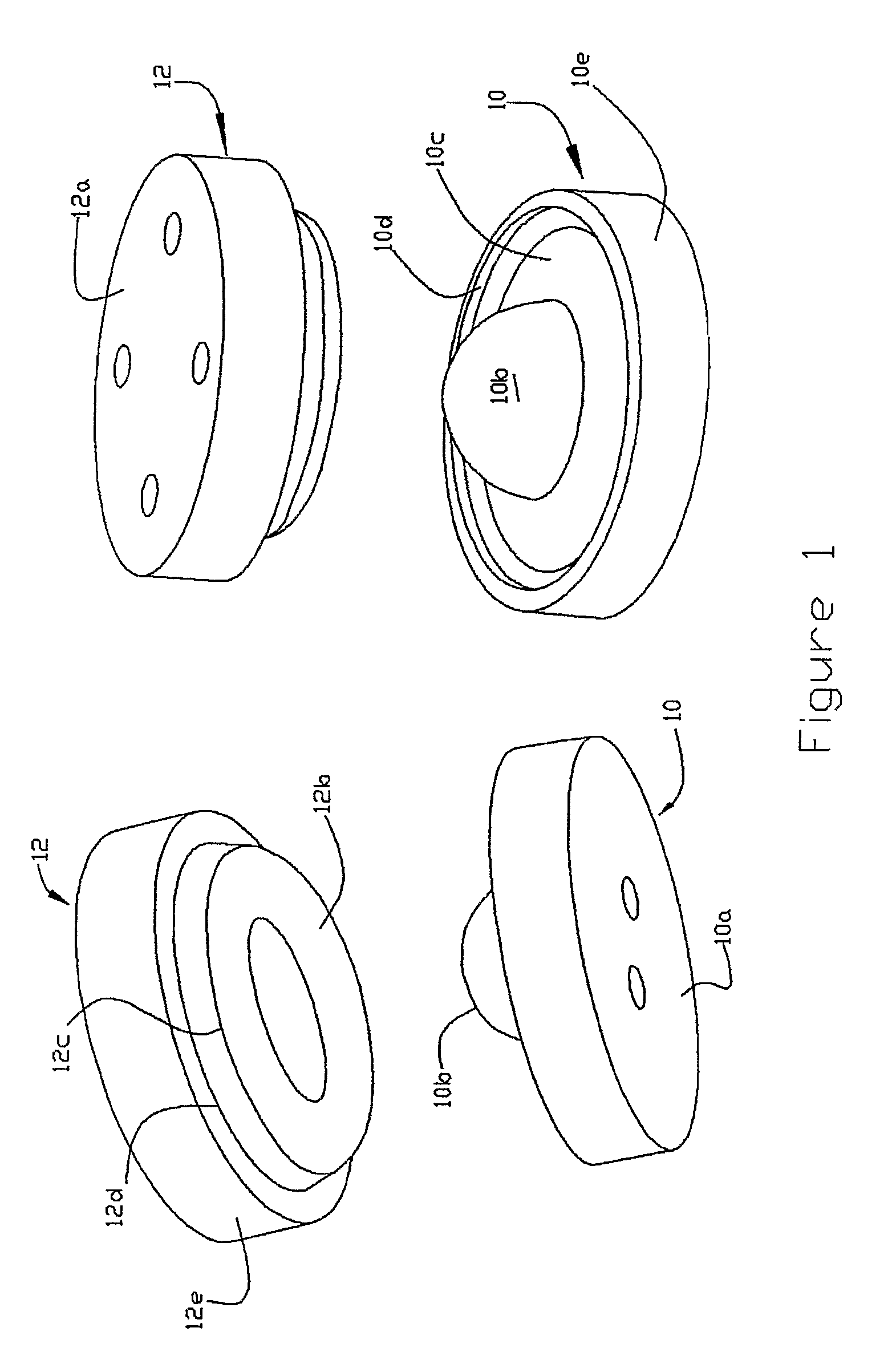Motion restoring intervertebral device
a technology of intervertebral devices and motion restoration, which is applied in the field of intervertebral devices to achieve the effects of reducing stress shielding, less stiffness, and enhancing the life of the prosthesis
- Summary
- Abstract
- Description
- Claims
- Application Information
AI Technical Summary
Benefits of technology
Problems solved by technology
Method used
Image
Examples
Embodiment Construction
[0030]Referring now to FIGS. 1 and 2, a motion restoring intervertebral device comprises first and second components 10 and 12 with component 10 having a vertebral engaging surface 10a for buttressing against a vertebral body and an articulating surface in the form of a dome, e.g., generally semispherical convex center section 10b joined to or merged with an encircling revolved concave recess, e.g., a generally semi-cylindrical concave end section 10c which terminates in an outer lip or rim 10d. Component 12 has a vertebral engaging surface 12a for buttressing against an opposing vertebral body and a mating / articulating surface in the form of a generally semispherical concave center section 12b joined to an encircling end section 12c, having a generally semi-cylindrical convex cross-section, terminating in an outer lip or rim 12d. A peripheral wall 10e and 12e extends between the two surfaces of components 10 and 12, respectively. The radius r2 of the center sections (10b, 12b) is w...
PUM
| Property | Measurement | Unit |
|---|---|---|
| thickness | aaaaa | aaaaa |
| radius r2 | aaaaa | aaaaa |
| radius r2 | aaaaa | aaaaa |
Abstract
Description
Claims
Application Information
 Login to View More
Login to View More - R&D
- Intellectual Property
- Life Sciences
- Materials
- Tech Scout
- Unparalleled Data Quality
- Higher Quality Content
- 60% Fewer Hallucinations
Browse by: Latest US Patents, China's latest patents, Technical Efficacy Thesaurus, Application Domain, Technology Topic, Popular Technical Reports.
© 2025 PatSnap. All rights reserved.Legal|Privacy policy|Modern Slavery Act Transparency Statement|Sitemap|About US| Contact US: help@patsnap.com



